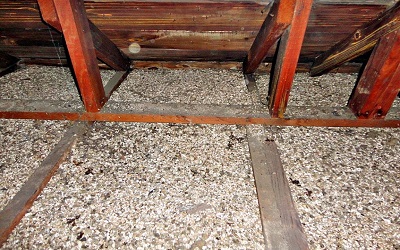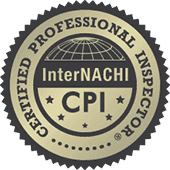Vermiculite and Asbestos Insulation

Vermiculite and Asbestos Insulation
Vermiculite is a mica-like mineral mined around the world and used in a variety of commercial and consumer products from 1919 to 1990. Vermiculite is a lightweight, odorless and fire-resistant material that has been used in numerous applications, such as insulation for attics and walls.
Not all vermiculite produced before 1990 contains asbestos fibres. However, to be safe and in the absence of evidence to the contrary, it is reasonable to assume that if your building has older vermiculite-based insulation, it may contain some asbestos. Although the overall percentages of asbestos in bulk vermiculite are very low, the airborne percentages can increase if the material is disturbed. Asbestos poses health risks only when fibres are present in the air that people breathe.
Asbestos Contamination
Exposure to asbestos can result in lung cancer, mesothelioma, inflammation of the chest cavity, and a scarring disease of the lungs known as asbestosis. The risk of contracting these diseases generally increases with the duration and intensity of exposure to asbestos, and smokers may face an even greater risk of lung cancer.
Identification
Vermiculite insulation is a pebble-like or rectangular, chunky product about the size of a pencil eraser, and usually gray-brown or silver-gold in color. Inspectors should be on guard for empty bags in the attic that bear the name Zonolite®, as this was the commercial name for vermiculite mined in the notorious Libby mine.

What should be done about asbestos found in homes?
Never disturb vermiculite or any asbestos insulation. These products must be airborne to cause a health risk through inhalation, which most likely happens when they are removed or handled. The following are some additional tips with vermiculite issues:
- Consider that contractors may track vermiculite into the house if they should enter the attic.
- Dispose of waste and debris contaminated with asbestos in tight containers.
- Do not allow children to play in an attic.
- Do not launder clothing exposed to vermiculite with family clothing.
- Do not overreact. According to the National Institute for Occupational Safety and Health (OSHA), asbestos-related illnesses are usually the result of high levels of exposure for long periods of time. Left undisturbed in the attic, asbestos is generally not a life-threatening situation.
- Do not use the attic as a storage area.
- Hire a professional asbestos contractor before remodeling or renovating if these processes may disturb the vermiculite.
- Never use compressed air for cleaning around vermiculite. Avoid dry-sweeping, vacuuming, shoveling, or other dry clean-up methods. Wet methods are best.
- Seal cracks and holes in attics, such as around light fixtures and ceiling fans, where insulation may pass through.
- Use proper respiratory protection. Disposable respirators or dust masks are not appropriate for avoiding asbestos exposure.
In summary, vermiculite is a potentially hazardous mineral used as an insulator in buildings, but its dangers can be mitigated with some simple precautions.





